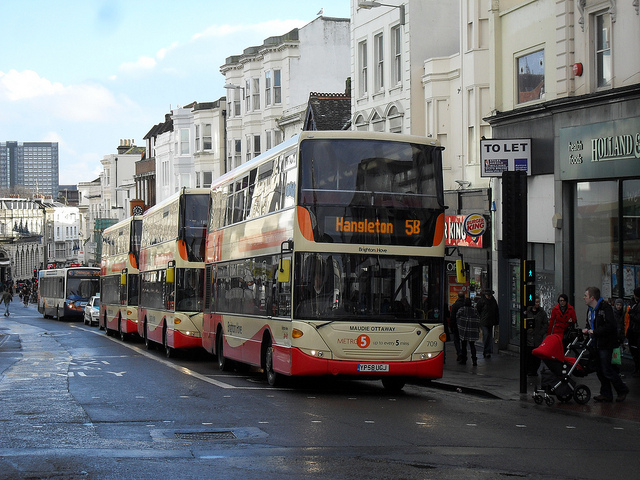The condition of Brighton and Hove’s roads is getting worse, according to an official report, and the pace of deterioration is faster.
But at current rates of spending it would take almost 300 years to resurface the local road network.
Even for main roads, an extra £500,000 a year is needed just to hold back the worsening state of the main roads under the council’s control.
The report said: “Evidence from condition surveys strongly indicates that the condition of the network as a whole has been declining since 2002-03 and at a faster rate since 2008-09.
“The decline in road condition is a national situation and an issue for all local authorities.
“Locally, within Brighton and Hove, the council has good strategies to deal with reactive maintenance, such as first-time permanent repairs rather than temporary pothole repairs.”

The report is due to be discussed by councillors this afternoon (Tuesday 29 November) as they decide on a strategy for tackling a maintenance backlog.
It also said: “With current levels of capital expenditure the council is only able to resurface 0.35 per cent of the unclassified road network each year.
“This means that if the council continues with this level of expenditure it would take 285 years to complete a full cycle of resurfacing of unclassified roads.
“There is strong evidence that the use of preventative maintenance is vital to enabling the council to sustain or minimise decline in the condition of the network with limited budgets.”
But the outlook appears to be steady decline over the coming 40 years although officials vowed to work with colleagues across the region to find ways to make their money go further.
The report said that Brighton and Hove City Council is responsible for 388 miles of roads and associated infrastructure worth about £1.7 billion.
It looks after 37 miles of A roads, 14 miles of B roads, 29 miles of C roads and 308 miles of unclassified roads.
It also has more than 600 miles of pavements, 25,000 lights, including street lights, subway lights and illuminated signs and bollards, and an array of street furniture, grass verges, traffic lights, grit bins, road signs and crossings.

Like all councils, it has been told to produce a Highways Assets Management Strategy or lose out on funding.
Although yesterday (Monday 28 November) the Department for Transport (DfT) said that it had awarded the council an extra £135,000 to help patch up thousands more potholes in the 2017-18 financial year.
The DfT estimates that the money should mean 2,600 potholes can be mended at an average cost of about £53 each.
The pothole cash is in addition to the £2.3 million Highways Maintenance Block allocation for the next financial year, which starts in April. The sums were confirmed in the Chancellor’s autumn statement.
The council’s Environment, Transport and Sustainability Committee is expected to approve the repairs and maintenance strategy this afternoon on a meeting at Hove Town Hall. The meeting is open to the public.
The report, included with the committee’s agenda, concludes: “There is a need to invest in highway assets to avoid deterioration of the network and the impact that will have on the economic, social and environmental wellbeing of the city.
“It is proposed that the council aims to manage the deterioration in the current condition of road surfaces by targeting resources as efficiently as possible, and, if funding permits, target improvement at key parts of the network.”
On key routes for commuters from Brighton and Hove, the DfT said that a renewal scheme costing up to £250 million between junctions 8 and 10 of the M23 would start by 2020.
This followed the £79 million scheme in the past few years on the A23 Handcross to Warninglid stretch as well as the £120 million upgrade on the stretch of the M25 just to the east of the M23 junction.
Ministers are promising more money for road repairs – but not until 2020-21 at the earliest.








